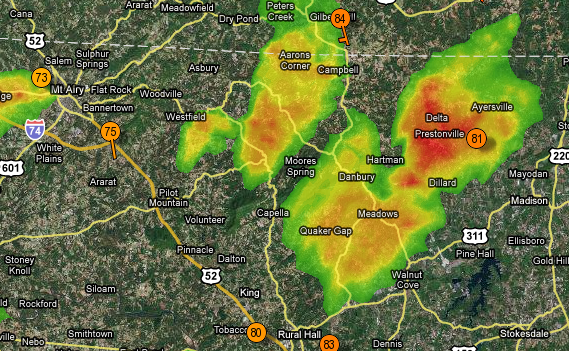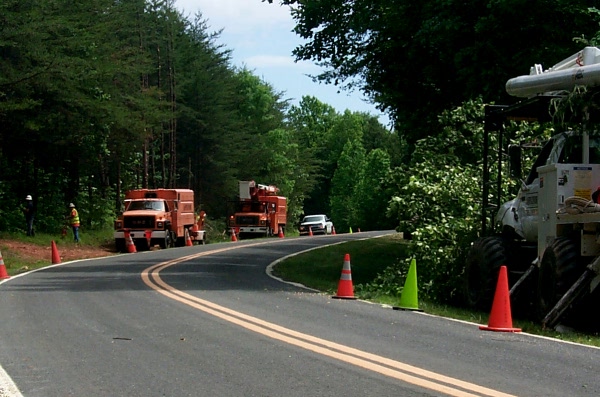
The local power company, Energy United, has been clearing trees around the power lines up on Duggins Road. I stopped and had a nice chat with the two supervisors about going as easy on the greenery as possible. They were very nice and didn’t disagree at all. Part of what they’re doing, though, is an infrastructure upgrade. They’re getting ready to replace the old copper and steel overhead wiring with aluminum and steel wiring. They say that the new wiring is stronger, less likely to melt when something falls on it, and has lower electrical resistance.
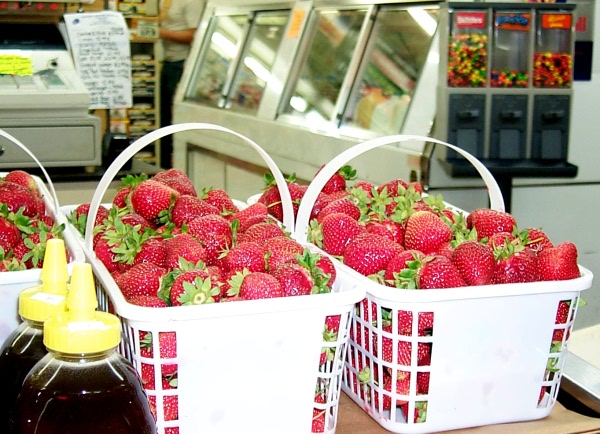
The local strawberries are in. These were in a produce market at Walnut Cove, and they told me the berries were grown in Madison.
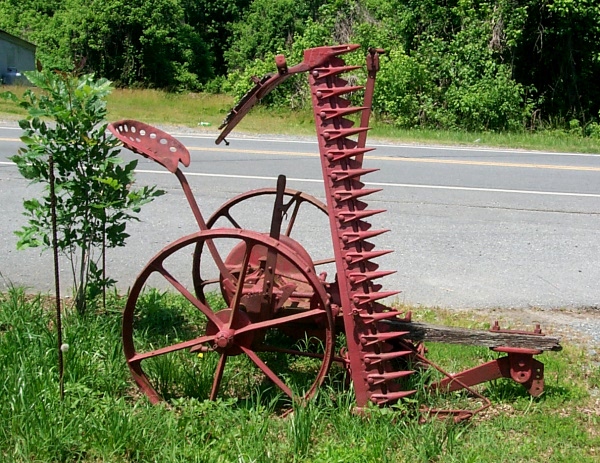
In the agricultural history department, this old sickle caught my eye. It’s beside the main drag in Walnut Cove.
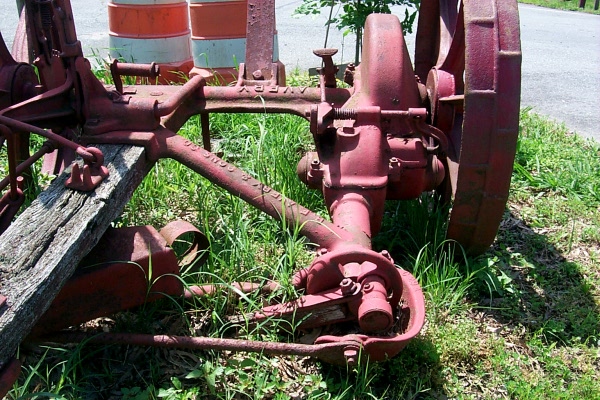
It’s meant to be pulled by a mule. It takes power from a rear wheel, and, through a shaft and cam, converts the wheel’s motion to reciprocal motion to drive the sickle. This machine was made by B.F. Avery & Sons Co., in case anyone is doing a web search on old machinery.
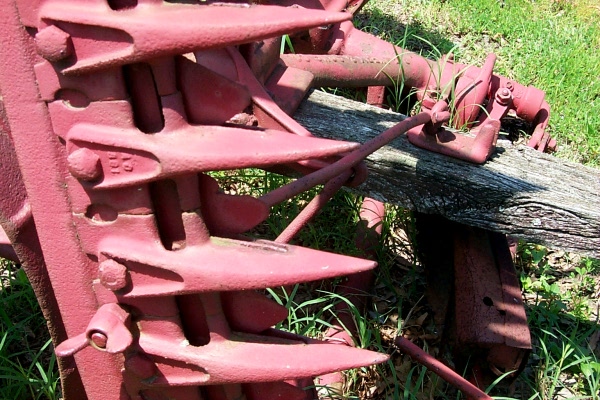
The sickle

Abandoned homeplaces are always fascinating. There are lots of them around here, and we take them for granted. But they can’t be common everywhere. I would imagine it takes certain trends and circumstances to create abandoned homesteads, things like cheap land, changing technology, more suburbanized ways of making a living, migration patterns, and so on. In short, not many people want to live that way anymore, and the places aren’t worth keeping up. It’s a shame.
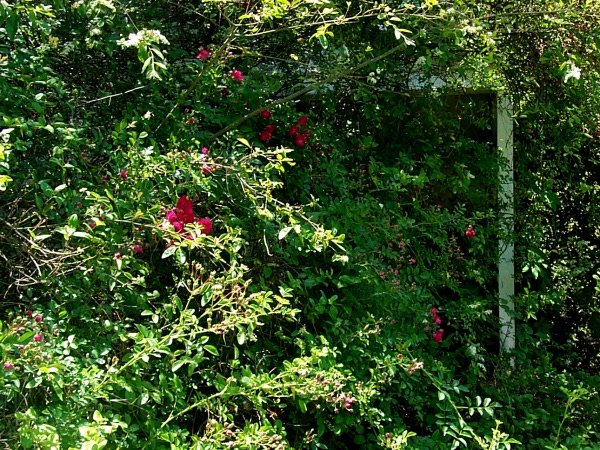
Old houses are a repository of vanishing culture. They’re also a repository of heirloom varieties of flowers, shrubs, and fruit trees. This particular old house, on Stewart Road on the way to Walnut Cove, has two huge growths of roses, one pink, one deep red. The front porch is large and is still there, but it’s been taken by overgrowth.
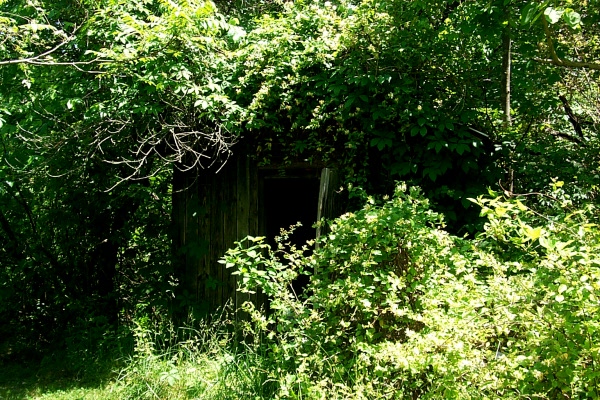
An overgrown outbuilding. It’s all so art nouveau.

Honeysuckle everywhere. Right now you can drive for miles and miles on the backroads and never leave the scent of honeysuckle.
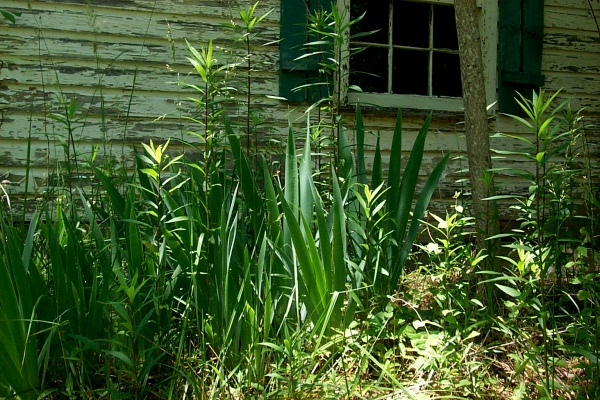
Irises by the kitchen window
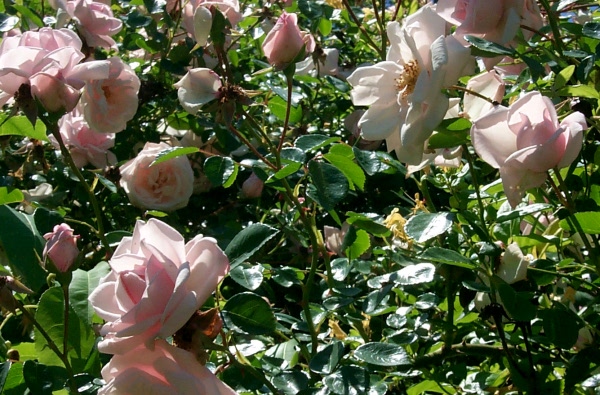
Old roses…
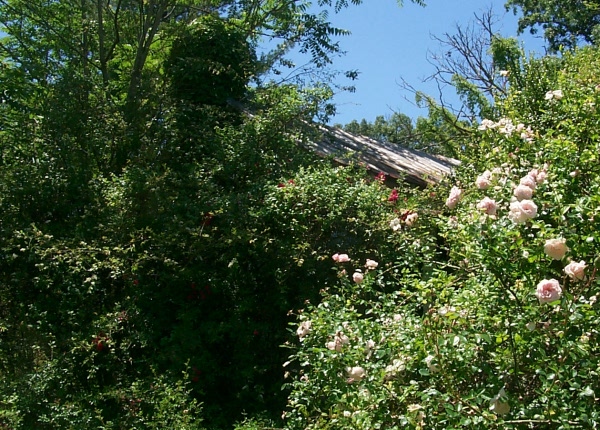
Can you find the chimney?

